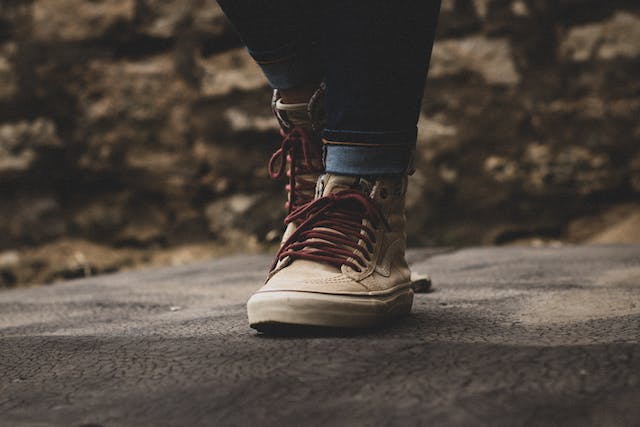Whether starting or looking to step up your game, the shoes you choose are critical. Find a pair that fits appropriately to run comfortably and without injury.
Shoes should fit well, with a thumb’s width of space for toes and wiggle room. Also, consider shoe length, as feet swell during exercise.
Size
Getting the right fit for your shoes is essential. Too loose shoes can cause blisters, while tight shoes can create pressure points or chafing. Try on several pairs of running shoes and experiment with lacing techniques to find a custom fit. Also, click here and consider how the weather and weight might impact your foot size.
A general rule of thumb is to go a half size larger than your everyday shoe size when shopping for trail runners, as this gives your feet room to move as you run. This ensures that your toes don’t bang and rub against the front inside of the shoe.
Another consideration is the heel-toe drop, or how high your feet are when running. You may prefer a flat zero-drop shoe or a higher drop for more support, depending on your running style and comfort level. Lastly, make sure the tongue of the shoe fits comfortably in your arch and that the shoe has enough cushioning to keep you comfortable during long runs.
Shape
The shoe’s shape is a big part of how your feet feel while running. Shoes with a more rigid structure are great for technical trails that require precision and control, while those with a bit more flexibility can be an excellent choice for those who prefer a little more wiggle room as they run over loose rocks and slushy mud.
Shoe manufacturers make their shoes around a specific foot form, known as a last. Try to find a brand that uses a look similar to your own so that the shoe will fit well. Many people will find that their feet swell as they run, so it’s essential to get your size right and then shop for a shoe that fits the way your feet do while you’re moving at an average pace.
Many regular runners tend to possess multiple pairs of shoes. The rationale is that varied shoes affect the forces the body experiences during running. Using them alternately decreases the chance of getting injured due to overuse. Additionally, it is advisable to have a lighter, more flexible pair of shoes for casual jogging or easy trail runs.
Weight
Zero-drop, carbon-fiber plates, minimalist or maximalist–these and other shoe features spark lively discussions in online forums and long-run chats. But how a shoe fits may matter as much, or more, than its cushioning and other features. A shoe that matches the length, width, and shape of your feet will allow you to land gently where you expect to, roll smoothly and stably through your stride, feel connected to the ground and supported from below, and push off naturally, quickly, and powerfully.
This happens in a lightweight shoe that does not interfere with your speed or efficiency. That means that a shoe that feels too heavy for your liking could start to slow you down, especially on more challenging terrain.
The type of trail you run will also influence how light or heavy a shoe should be. Mountain runners bounding over rocky, sloping terrain often prefer a firmer shoe to boost confidence and control over rough conditions. On the other hand, runners cruising over more mellow singletrack and rolling backroads may want more flexibility to stay comfortable through a longer run.
To determine if a shoe is the right weight for you, stand up and walk around in it. Check that the heel doesn’t slip and that the shoes have about a thumb’s width of space between your longest toe and the front.
Activity
You’ll typically want to use shoes designed explicitly for trail running when you run on rocky, off-road trails. This shoe category has a more aggressive outsole with thick, durable rubber and larger, widely spaced lugs for extra grip on rugged terrain. Many also include a rock plate to help protect feet from sharp rocks, roots, and other debris encountered on the trail. They’re also built with sturdier construction and a higher degree of cushioning than typical road running shoes. This may be a good option for those who find road impact shock too jarring on the body, joints, and muscles.
Most importantly, ensure you get the right fit and feel for your footwear. Start by finding a store with a large selection of runners and a footwear specialist on staff who understands fit subtleties like arch length and foot volume. Then, take a trial run and walk around in the shoes.
A secure, comfortable fit is essential to prevent blisters and injuries. Try the shoes on while wearing your running socks, and consider any insoles you may use.






